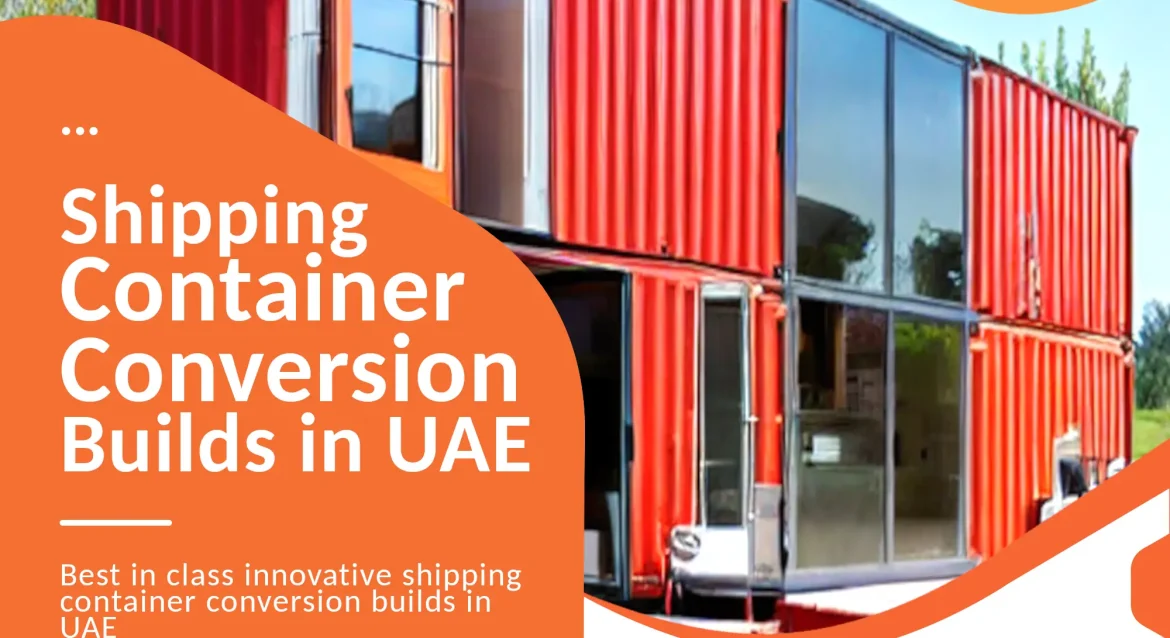The Pros and Cons of Shipping Container Conversion
Shipping container conversion has gained significant popularity in recent years in UAE and Middle East as a unique and sustainable approach to repurposing these robust steel structures. From trendy homes and offices to creative pop-up shops and restaurants, the versatility of shipping containers has captured the imagination of architects, designers, and DIY enthusiasts alike. However, like any construction method, shipping container conversion has its pros and cons that should be carefully considered before embarking on a project. In this blog post, we will explore the advantages and disadvantages of shipping container conversion, providing you with a comprehensive understanding of this innovative building technique. We Arabian containers are the pioneers in shipping container conversion in UAE and all over Middle East.
Table of Contents
Pros of Shipping Container Conversion:
1.1. Affordability and Cost-Effectiveness:
One of the primary advantages of shipping container conversion is its cost-effectiveness compared to traditional construction methods. Used shipping containers can be purchased at relatively low prices, providing a solid foundation for budget-conscious individuals and businesses. Moreover, the modular nature of containers allows for easy expansion and customization, minimizing additional construction expenses.
1.2. Sustainability and Eco-Friendliness:
As sustainability becomes increasingly important, shipping container conversion offers a greener alternative to traditional building practices. By repurposing existing containers, we reduce the demand for new construction materials and minimize waste. Additionally, converting shipping containers into habitable spaces can promote eco-friendly features like solar panels, rainwater harvesting systems, and energy-efficient insulation, further reducing the environmental impact.
1.3. Durability and Structural Integrity:
Shipping containers are designed to withstand extreme weather conditions, making them inherently durable and structurally sound. Constructed to withstand the rigors of international shipping, these steel boxes offer a robust and secure building framework. With proper insulation and reinforcement, shipping container structures can withstand hurricanes, earthquakes, and other natural disasters better than conventional buildings.
Cons of Shipping Container Conversion:
2.1. Space Limitations and Design Challenges:
While shipping containers offer a compact and modular building unit, their dimensions present some limitations in terms of interior space. The standard container size (typically 20 or 40 feet long) may require creative design solutions to maximize functionality and create comfortable living or working environments. Additionally, the structural modifications required for doors, windows, and openings may affect the overall structural integrity and require careful engineering.
2.2. Limited Design Flexibility:
The rigid shape and fixed structure of shipping containers can limit design possibilities, especially for those seeking unconventional architectural aesthetics. Containers have predefined structural elements, such as corner posts and side rails, which may restrict the design freedom compared to traditional construction methods. However, skilled architects and designers can still create visually appealing and innovative spaces within these limitations.
2.3. Insulation and Ventilation Challenges:
Shipping containers are primarily designed for cargo transport, not human habitation. As a result, they require proper insulation and ventilation to create comfortable and healthy living or working spaces. Without adequate insulation, containers can become excessively hot in warmer climates or prone to condensation and heat loss in colder environments. Addressing these challenges requires careful planning and the use of suitable insulation materials.
Shipping container conversion offers numerous benefits, including affordability, sustainability, and durability. It provides an opportunity to repurpose existing structures and reduce the environmental impact of construction. However, it is essential to consider the potential drawbacks, such as limited space, design challenges, and insulation requirements. By carefully weighing the pros and cons, consulting with professionals, and conducting thorough research, individuals and businesses can make informed decisions when embarking on shipping container conversion projects. With the right planning and expertise, the transformation of shipping containers into functional and innovative spaces can be a rewarding and exciting endeavor. So before planning to build any type of shipping container conversion builds consult with an experienced company in shipping container conversion vertical for the best build experience. Arabian containers have years of experience and always maintain high quality in shipping conversion builds in UAE. Feel free to contact us for any type of assistance related to shipping container conversion build services in UAE and any where in Middle East.

